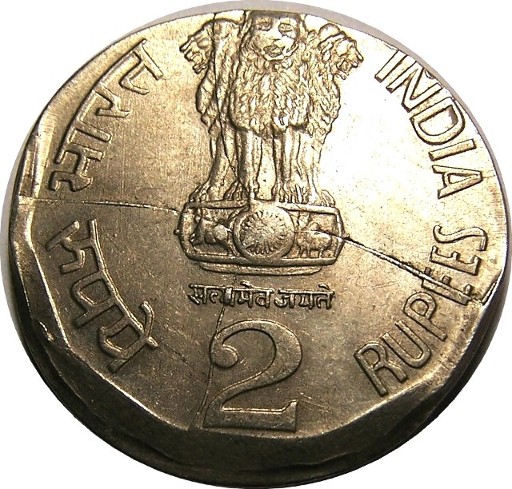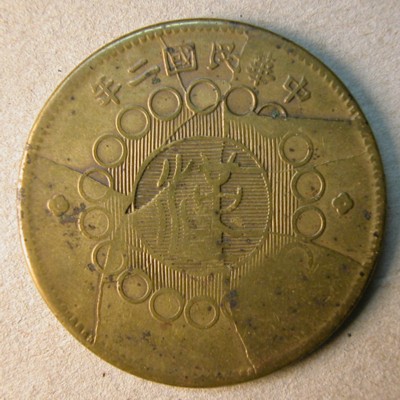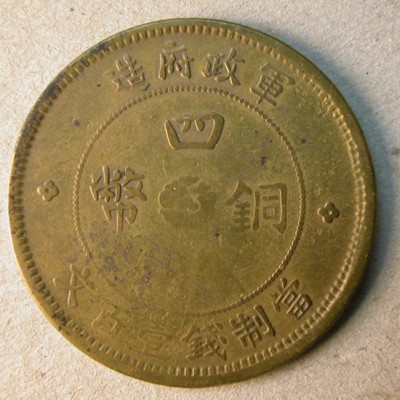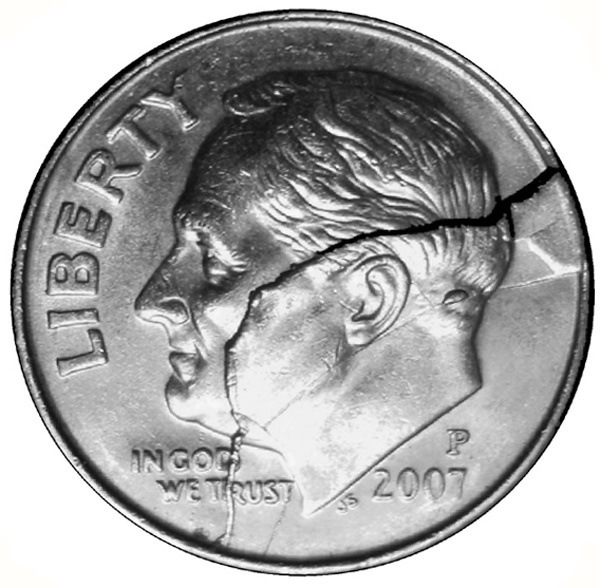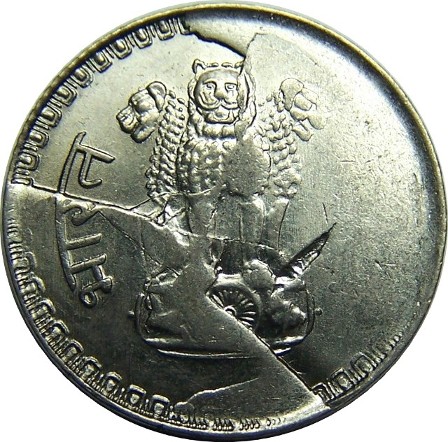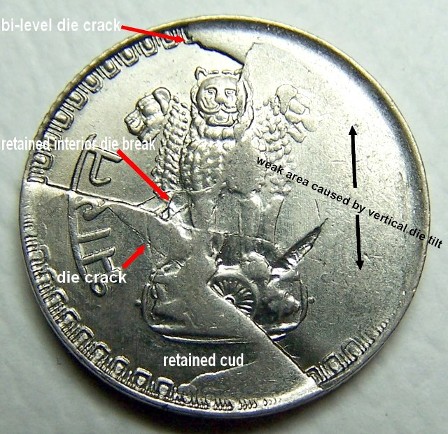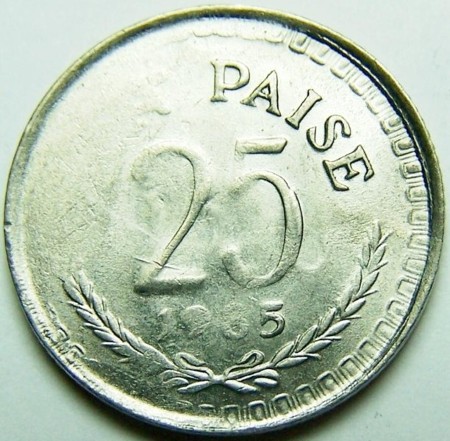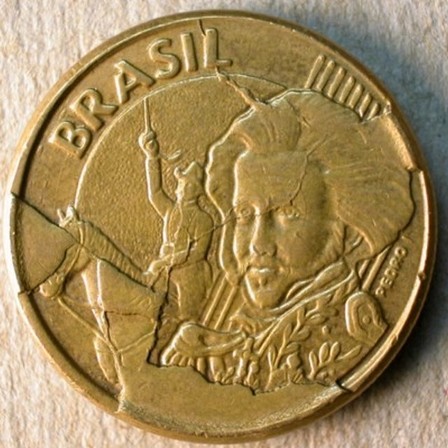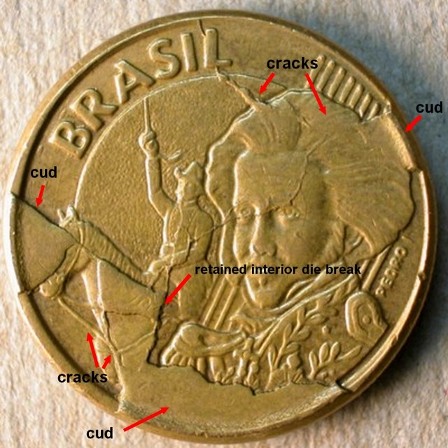PART IV. Die Errors
Die Cracks:
Shattered Die
Definition: A “shattered die” features numerous intersecting die cracks. Along with the profusion of die cracks, a shattered die can also incorporate other forms of brittle fracture such as die breaks and retained die breaks.
A shattered die often indicates a terminal die state, i.e., a die just short of catastrophic failure. A series of coins struck by a shattered die can often be arranged in a progression of increasing severity.
A network of intersecting bi-level cracks constitutes one type of shattered die. In a bi-level die crack, there is vertical displacement at the site of the crack. This means the die face has sunk in on one side of the crack.
An example of converging radial bi-level die cracks can be seen in this 2000 Indian 2 rupees coin. These bi-level die cracks meet in the center of the obverse face.
A more extensive set of bi-level die cracks can be seen below in a 1913 Chinese 100 cash coin. The obverse face shows at least seven bi-level die cracks and a few smaller conventional die cracks. At least one crack shows characteristics of both. This is not that unusual, as you can have both horizontal spread and vertical displacement in the same location, or a transition from vertical displacement to horizontal spread as you proceed along the crack. Despite its tenuous structural integrity, this die was nowhere near terminal failure and was likely able to strike quite a few more coins in this condition.
The shattered die found on this 2007-P Roosevelt dime consists of a 50% retained cud with numerous bi-level die cracks within the body of the retained cud. At least seven similar shattered obverse dies are known among 2007-P dimes.
This coin is in the collection of Richard Creny. Image by R. Mentzer.
The shattered die shown below has extensive evidence of brittle fracture. Many types of brittle fracture may be represented, e.g., die breaks, retained die breaks, die cracks, a split die, etc. The die may or may not be approaching catastrophic failure (see Catastrophic Die Failure). Not surprisingly, a series of coins struck by a shattered die can often be arranged in a progression of increasing severity.
Note: Two separate specimens are shown below.
The 1985 India 25 paise shown below Features a large retained cud, a small retained interior die break, and numerous die cracks, most of them bi-level. The right side of the obverse face and the corresponding left side of the reverse face are weakly struck. This is largely due to a tilted die error (vertical misalignment) of the entire obverse face. The left side of the obverse is quite strongly struck, despite the large retained cud. This should have led to a reduction in effective striking pressure. The fact that it didn’t indicates that this part of the obverse die face was tilted down, while the opposite pole was tilted up. This tilt was most likely due to a break at the base of the die or through the shaft of the die – a break that allowed the die to tilt down strongly toward one pole.
The 2002 Brazilian 10 centavos shown below expresses various forms of brittle fracture. There are three cuds, one retained interior die break, and a tracery of intersecting die cracks of both the conventional and the bi-level type.
